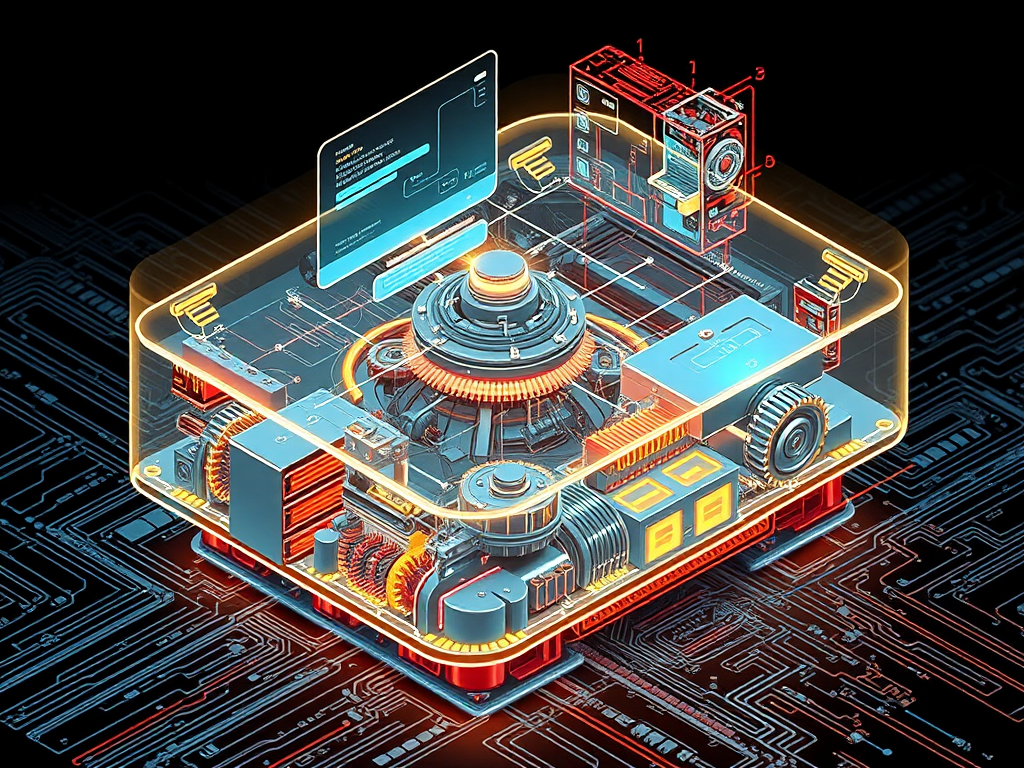Introduction
Have you encountered this frustration? When developing a GUI program with Tkinter, the interface frequently freezes, driving users crazy. Especially when processing large amounts of data or executing time-consuming operations, the entire program seems to "freeze." Today, I'll discuss this problem that troubles many Python developers.
Root Cause
Why does interface freezing occur? This relates to how Tkinter works.
Tkinter uses a single-threaded event loop mechanism to handle all interface updates and user interactions. Imagine it's like a tireless waiter constantly checking if there are new tasks to handle. However, if this waiter suddenly has to help cook in the kitchen (execute time-consuming operations), then the guests in the dining room (user interface) are left unattended.
I remember encountering this issue while developing a data visualization project. The program needed to process real-time data from sensors while drawing charts. As you can imagine, every time it processed data, the interface would freeze for several seconds. This experience would make users want to throw their computers.
Solutions
So, how do we solve this problem? I've summarized three main solutions:
Multithreading
The first solution is using multithreading. This is like having multiple waiters in a restaurant, one dedicated to serving guests while others handle kitchen work. Here's a practical example:
import tkinter as tk
from threading import Thread
from queue import Queue
import time
class DataProcessingApp:
def __init__(self):
self.root = tk.Tk()
self.root.title("Data Processing Example")
self.data_queue = Queue()
# Create interface elements
self.status_label = tk.Label(self.root, text="Waiting for processing...")
self.status_label.pack(pady=10)
self.progress_label = tk.Label(self.root, text="0%")
self.progress_label.pack(pady=5)
self.start_button = tk.Button(self.root, text="Start Processing", command=self.start_processing)
self.start_button.pack(pady=10)
# Start timer to check data queue
self.check_queue()
def process_data(self):
# Simulate time-consuming data processing
for i in range(100):
time.sleep(0.1) # Simulate processing delay
self.data_queue.put(("progress", i + 1))
self.data_queue.put(("complete", None))
def start_processing(self):
self.start_button.config(state=tk.DISABLED)
self.status_label.config(text="Processing data...")
# Start worker thread
worker_thread = Thread(target=self.process_data, daemon=True)
worker_thread.start()
def check_queue(self):
# Check queue for data updates
try:
msg_type, data = self.data_queue.get_nowait()
if msg_type == "progress":
self.progress_label.config(text=f"{data}%")
elif msg_type == "complete":
self.status_label.config(text="Processing complete!")
self.start_button.config(state=tk.NORMAL)
except Queue.Empty:
pass
# Check queue every 100 milliseconds
self.root.after(100, self.check_queue)
def run(self):
self.root.mainloop()
As you can see, we put time-consuming data processing in a separate thread, while the main thread only handles interface updates. This way, the user interface won't freeze.
Coroutines
The second solution is using coroutines. This approach is like having a versatile waiter who can flexibly switch between different tasks. Here's an example combining asyncio and tkinter:
import tkinter as tk
import asyncio
import threading
from concurrent.futures import ThreadPoolExecutor
import time
class AsyncApp:
def __init__(self):
self.root = tk.Tk()
self.root.title("Async Processing Example")
self.status_var = tk.StringVar(value="Ready")
self.progress_var = tk.StringVar(value="0%")
# Create interface elements
tk.Label(self.root, textvariable=self.status_var).pack(pady=10)
tk.Label(self.root, textvariable=self.progress_var).pack(pady=5)
tk.Button(self.root, text="Start Processing", command=self.start_async_task).pack(pady=10)
# Create event loop
self.loop = asyncio.new_event_loop()
self.thread_pool = ThreadPoolExecutor(max_workers=1)
async def async_task(self):
self.status_var.set("Processing...")
for i in range(100):
await asyncio.sleep(0.1) # Simulate async operation
self.progress_var.set(f"{i+1}%")
self.status_var.set("Complete!")
def start_async_task(self):
asyncio.run_coroutine_threadsafe(self.async_task(), self.loop)
def run_event_loop(self):
asyncio.set_event_loop(self.loop)
self.loop.run_forever()
def run(self):
# Run event loop in separate thread
thread = threading.Thread(target=self.run_event_loop, daemon=True)
thread.start()
self.root.mainloop()
Event-Driven
The third solution is using an event-driven approach. This is like attaching time labels to each task and executing them according to a predetermined schedule. Here's a specific implementation:
import tkinter as tk
import time
class EventDrivenApp:
def __init__(self):
self.root = tk.Tk()
self.root.title("Event-Driven Example")
self.counter = 0
self.is_processing = False
self.status_label = tk.Label(self.root, text="Ready")
self.status_label.pack(pady=10)
self.progress_label = tk.Label(self.root, text="0%")
self.progress_label.pack(pady=5)
self.start_button = tk.Button(self.root, text="Start Processing", command=self.start_processing)
self.start_button.pack(pady=10)
def process_chunk(self):
if not self.is_processing:
return
if self.counter < 100:
self.counter += 1
self.progress_label.config(text=f"{self.counter}%")
self.root.after(100, self.process_chunk) # Process every 100 milliseconds
else:
self.status_label.config(text="Processing complete!")
self.start_button.config(state=tk.NORMAL)
self.is_processing = False
self.counter = 0
def start_processing(self):
self.start_button.config(state=tk.DISABLED)
self.status_label.config(text="Processing...")
self.is_processing = True
self.process_chunk()
def run(self):
self.root.mainloop()
Practice
In practical applications, I've found that each of these solutions has its advantages and disadvantages. The multithreading solution is suitable for IO-intensive tasks like file operations and network requests; the coroutine solution is suitable for scenarios requiring fine control; and the event-driven solution is suitable for simple scheduled tasks.
In a real-time data analysis project, I used a multithreading + queue solution. The main thread handled interface display, while another thread handled data collection, passing data through a queue. This ensured both interface responsiveness and real-time data updates.
Summary
The key to solving Tkinter's interface freezing issues lies in understanding the core principle of "don't block the main thread." Whichever solution you choose, ensure that the main thread can focus on handling interface events.
Which of these solutions do you think best suits your project needs? Feel free to share your thoughts and experiences in the comments.
If you want to learn more about Python GUI development, we can discuss how to optimize Tkinter's interface layout next time, making your program not just smooth but also attractive.







